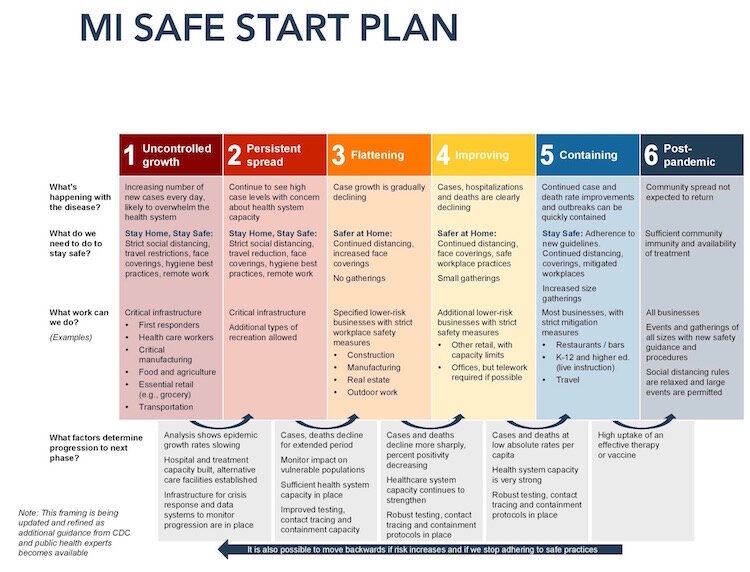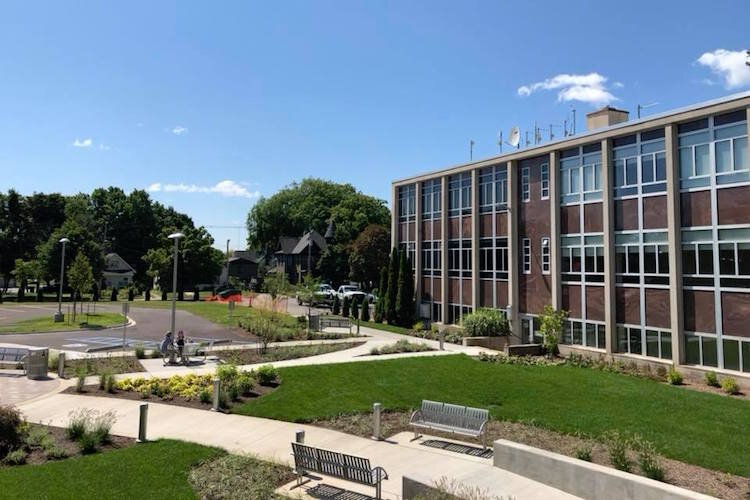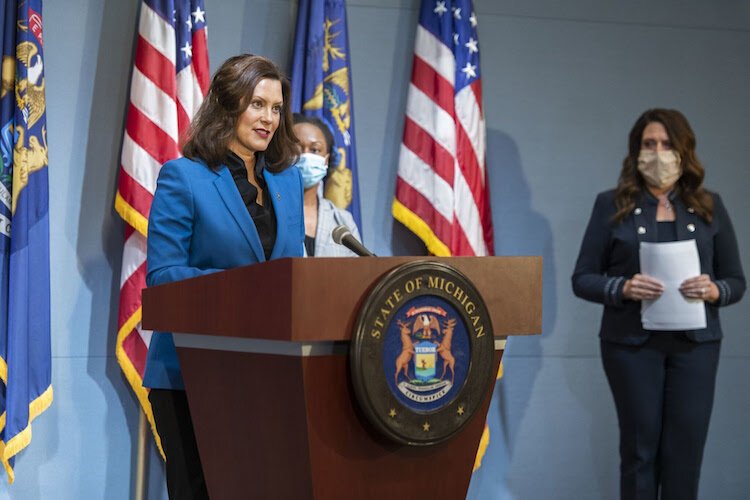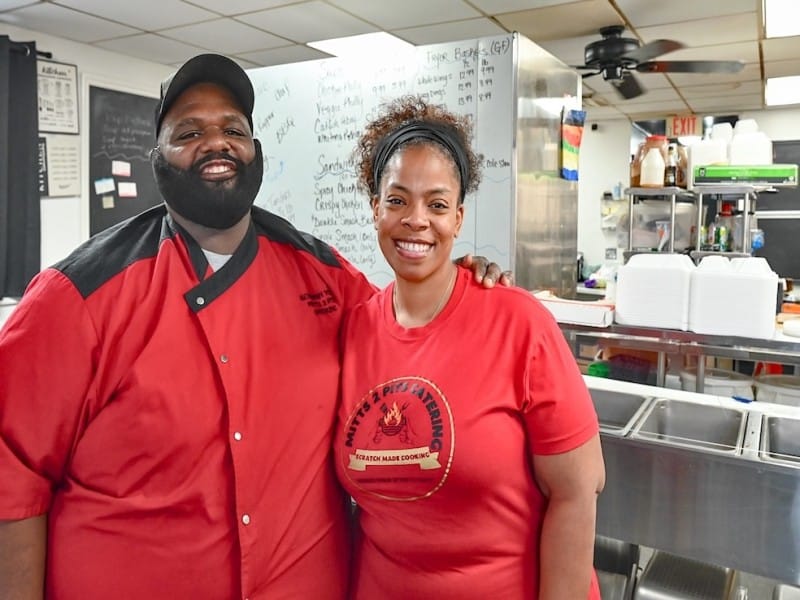Calhoun County official works to influence group setting standards for reopening Michigan
Eric Pessell is playing a major role in ensuring that Calhoun County is focusing its efforts on flattening the curve as the county’s Health Officer, and he's also offering guidance that's making its way to state officials charged with establishing consistent policies for the re-opening of businesses throughout Michigan.
Editor’s note: This story is part of Southwest Michigan Second Wave’s On the Ground Battle Creek series and our ongoing COVID-19 coverage. If you have a story of how the community is responding to the pandemic please let us know here.
Eric Pessell is playing a major role in ensuring that Calhoun County is focusing its efforts on flattening the curve as the county’s Health Officer, and he’s also offering guidance that’s making its way to state officials charged with establishing consistent policies for the re-opening of businesses throughout Michigan.
Pessell is part of a small working group of health officers who are making suggestions and ideas to Allegan County’s Health Officer, Angelique Joynes. She was asked to represent the 45-member Michigan Association of County Health Officers on a committee formed by the Michigan Economic Recovery Council.
Members of that committee are gathering input to be used to determine guidelines for businesses in Michigan to re-open. On May 7, Gov. Gretchen Whitmer extended stay-at-home orders for many Michiganders but eased them for manufacturing. (See related story.)
“We preempted some things and went forward with some guidance on different types of businesses and how they could safely reopen,” Pessell says.
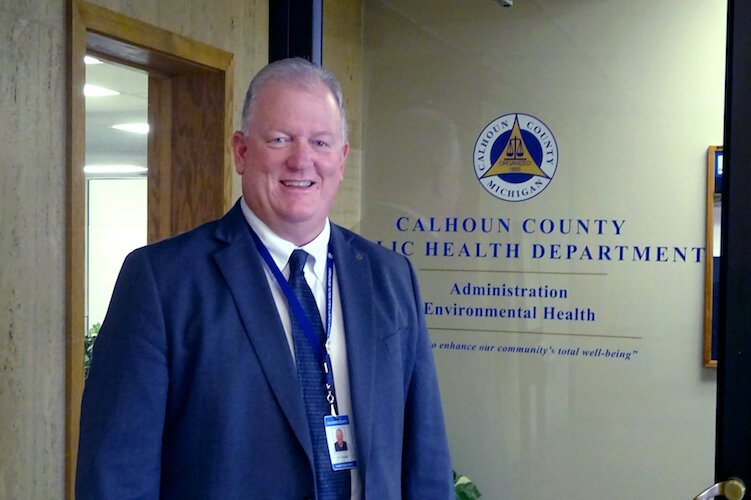
The guidance being offered by the working group is designed to create consistency throughout the state as it re-opens for business. Pessell says he doesn’t know if the governmental leaders or the Michigan Economic Recovery Commission will use the information his group is putting together, but based on the language being “put out there, it appears that they are listening to us,” he says.
Of particular concern are sectors deemed higher risk, such as restaurants and workout facilities.
“You have to ask yourself, and this is when it becomes nuanced, ‘How much can you reduce the risk?’ Through engineering you might be able to set it up so people aren’t coming in the same entrance or locker room at the same time,” Pessell says. “Administratively you might have policies which may include staggering shifts or having certain groups come in at different times. There are different ways we can mitigate those risks.”
While many sectors, including work out facilities and gyms, will remain completely closed until the state-mandated orders are lifted, a number of restaurants have been offering take-out, curbside pickup or delivery.
Fifty-three percent of Michigan operators say they continued operating but for off-premises traffic only and 47 percent of operators anticipate operating for off-premises traffic during the next 30 days, according to the Michigan Restaurant & Lodging Association.
That number is expected to continue to increase as restaurant owners become comfortable with a new way of doing business.
However, the MRLA also found that 53 percent of Michigan operators say they temporarily closed their restaurant since the beginning of the coronavirus outbreak in March and 2 percent of Michigan operators say they have permanently closed their restaurant since the beginning of the coronavirus outbreak in March.
Four percent of operators anticipate permanently closing their restaurant within the next 30 days.
“I’m sure some may never reopen,” Pessell says. “Unfortunately, those are some of the costs associated with the pandemic.”
Pessell says with 440 licensed eating facilities in Calhoun County, it is not feasible to have each one inspected by a health officer before they are able to fully re-open to the public.
“The Food and Drug Administration has guidance on this and our staff has been in touch with restaurants to let them know what the latest guidance is. It’s not like they’re on an island,” Pessell says.
The Importance of Guidance
This type of guidance and input is critical to the safe startup of business and industry and Pessell says public health officials play an important role in guiding them through various scenarios.
Pessell says he was among those who began having phone calls in January with state officials when they recognized the outbreak of a virus that hadn’t been seen before, a novel coronavirus.
“Anytime that happens it piques the interest of public health,” he says.
The county began studying its pandemic plans and procedures. In early February when the State Department and Trump administration issued travel bans from China, the county ramped up its involvement, including compliance with federal guidelines to reach out to anyone who had traveled from China to the United States and check in with them daily for 14 days.
At that point, Pessell and his team were meeting with schools and health centers to make sure everyone had up-to-date contact information.
“Those of us in my job had planned for and done tabletop exercises on pandemics, however, no matter how much planning you do when it becomes a reality things are a little different even though you planned for it,” Pessell says. “When it becomes real, you don’t know if you quite planned for parts like having to shelter in your home and closing businesses.” The devastating overall impact is something that surprised Pessell who was initially looking at it through his public health lens.
This is not his first time dealing with virus outbreaks — he was in his current role when the country dealt with H1N1 and SARS. This is his first pandemic, however, and he says he was not surprised by the rapid pace of its worldwide spread
“I knew that it was going to happen because it had crossed too many borders,” Pessell says. “With a pandemic, it’s a cataclysmic event that not only hurts people mentally and physically, but it also hurts our way of life. Everything we stand for has been impacted.”
Early on, Pessell and his team were working to alleviate fears and hysteria by working to get the most accurate and timely information in front of residents. At the time, he predicted that this information would change rapidly and it has.
While distributing accurate data and information, county officials also have been battling misinformation. Pessell says this erroneous information is causing some people to think that it’s “not a big deal” and comparing it to the flu while other people think “we’re all going to die.”
Although Gov. Gretchen Whitmer’s stay-at-home mandates have drawn criticism and protests, Pessell says he “knows for a fact that if these actions hadn’t been taken the death rate would be higher.”
State guidelines, including the observance of social distancing, appear to be working, but Pessell says it’s not “mission accomplished yet.”
He says he understands the frustration being expressed by people who want to know when they can achieve a new normal. They want to know if they should start planning events in the coming months.
“It’s true that we want to fill in the blanks and let people know if they should plan on events in July, but our instincts are saying ‘no’,” Pessell says. “The majority of Calhoun County residents have done fairly well. People did what they were instructed to do and they’re continuing to. But, I think that wears thin over time. My fear is that after seeing the warm weather, from what I’ve observed people are going back to normal too soon.
“Now’s, not the time to get back to normal. If we stop doing those things this virus comes back and for some, it will come back hard. I want us to open up, but do it the safest way possible.”
Re-opening During the COVID-19 Pandemic
Nine Requests from Michigan’s Local Public Health Departments
Coordinated State and Local Strategies
1. Local public health to review and respond to new guidance and orders
2. Clear and consistent guidance and orders across Michigan
3.Gradual reopening process that prioritizes openings based on low risk to public health
4. Workplace controls to maintain public health
Shoring Up Local Testing, Tracing, and Surveillance Infrastructure
5.Testing available for every resident in every community
6. Real-time surveillance to measure COVID-19 in every county
7. Flexible and funded case investigation and contact tracing improvements
Pandemic Resilience and Recovery in Communities
8. Serving populations experiencing disparities and extreme hardship
9. Empowering Michiganders to take action to protect health
This document outlines the key “asks” of local health departments who are serving on the front lines of the public health response to the COVID-19 pandemic. It’s important that everyone who is planning for the reopening of businesses and activities in Michigan understand what local health departments need to keep people safe. Most importantly, local health departments request a highly coordinated and clearly communicated reopening plan.
Michigan has 45 local health department jurisdictions – many county-level and some covering two or more counties (district health departments). These health departments serve everyone in Michigan, whether they live in an urban, suburban, or rural area.
See the complete document detailing requests here.
